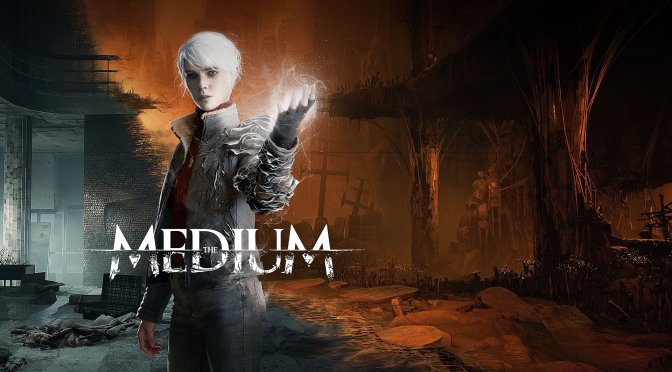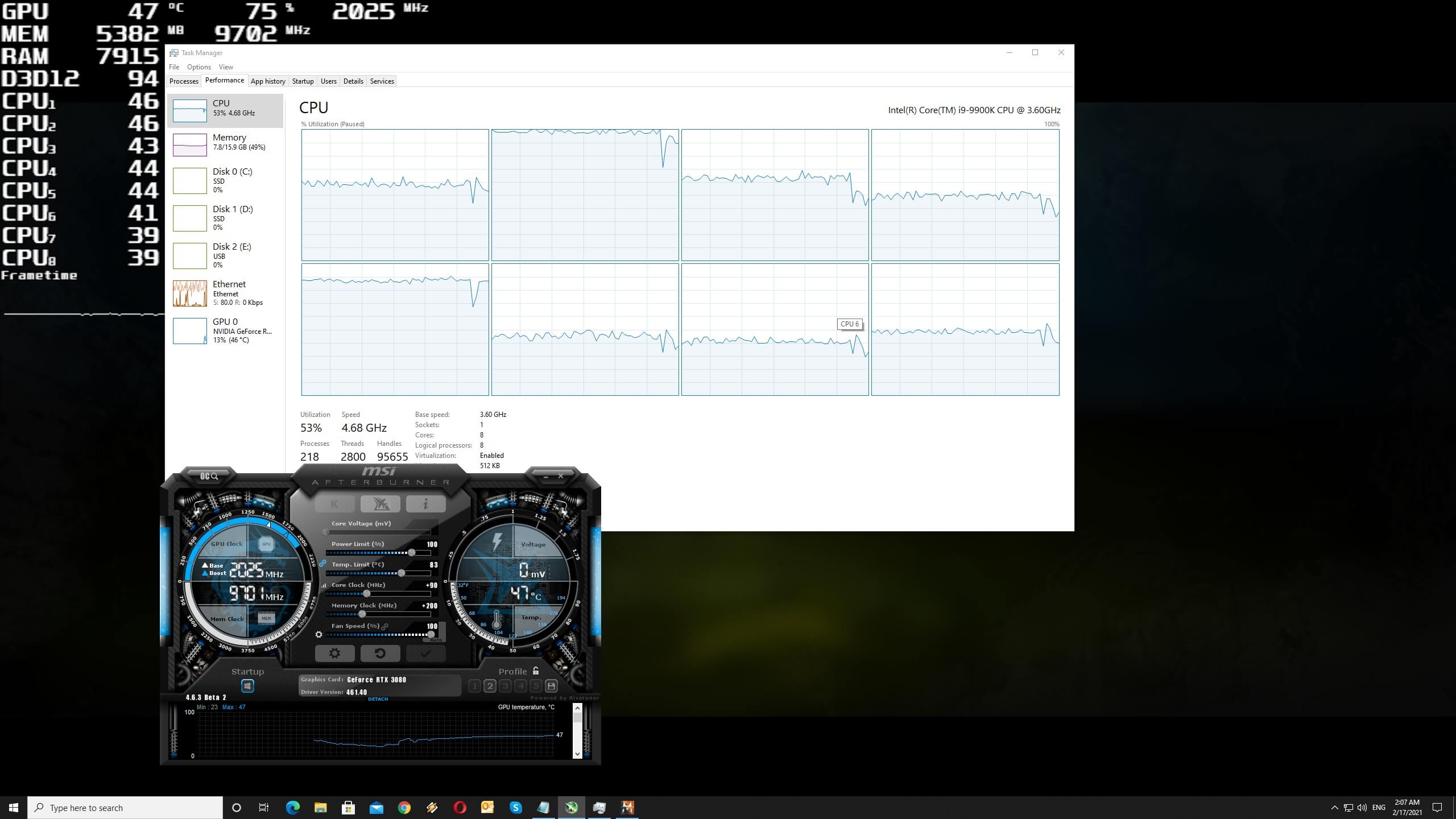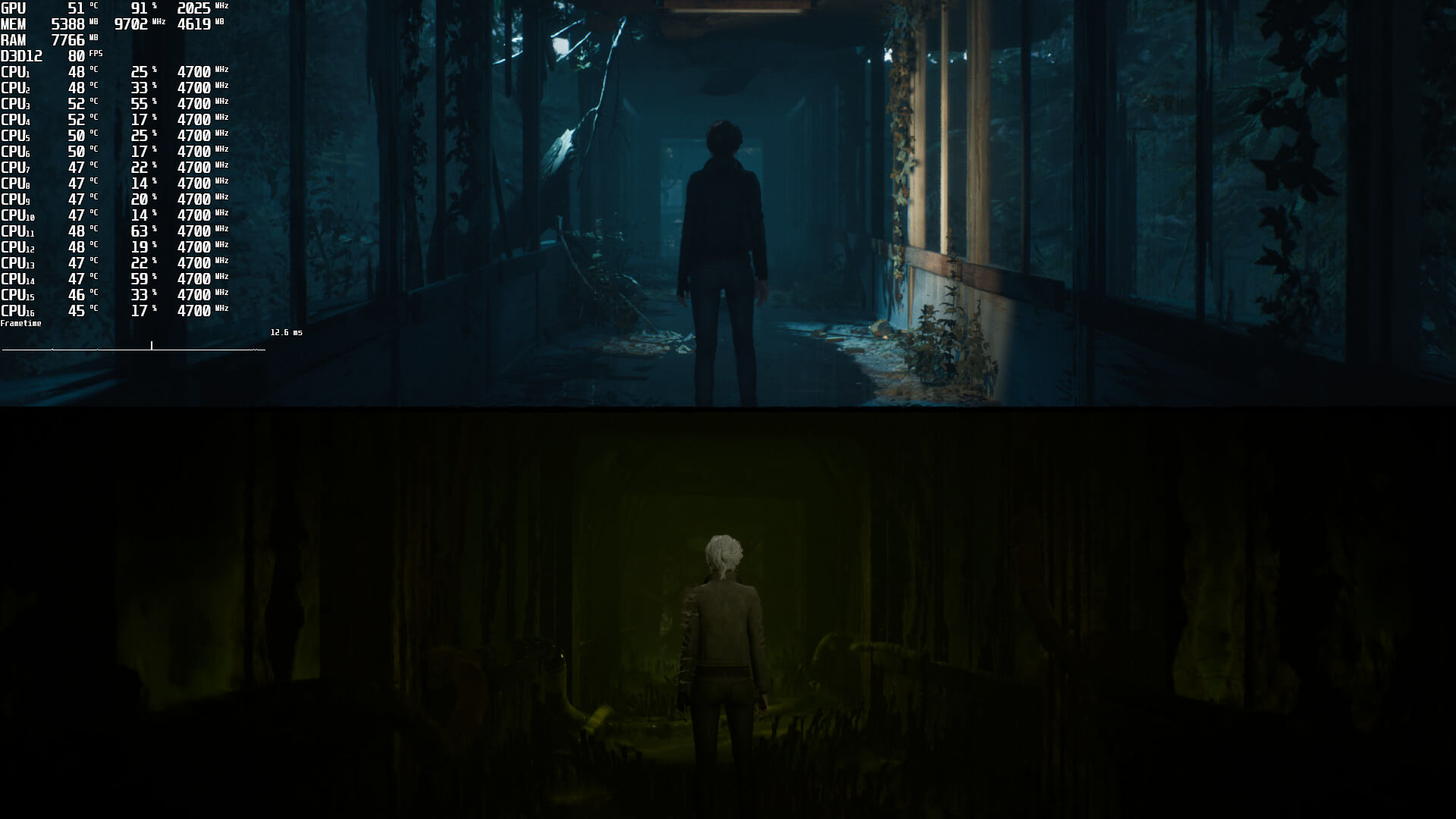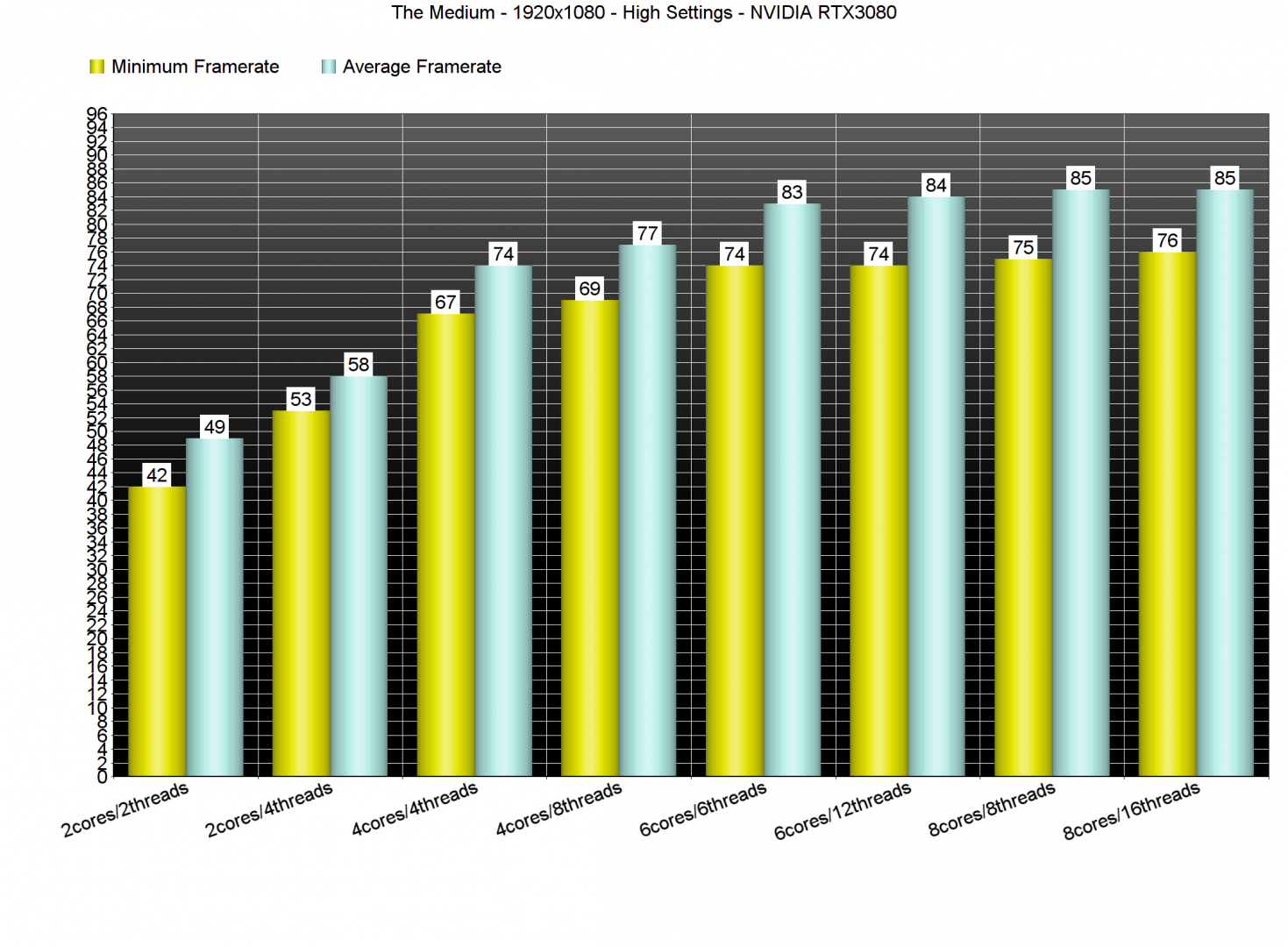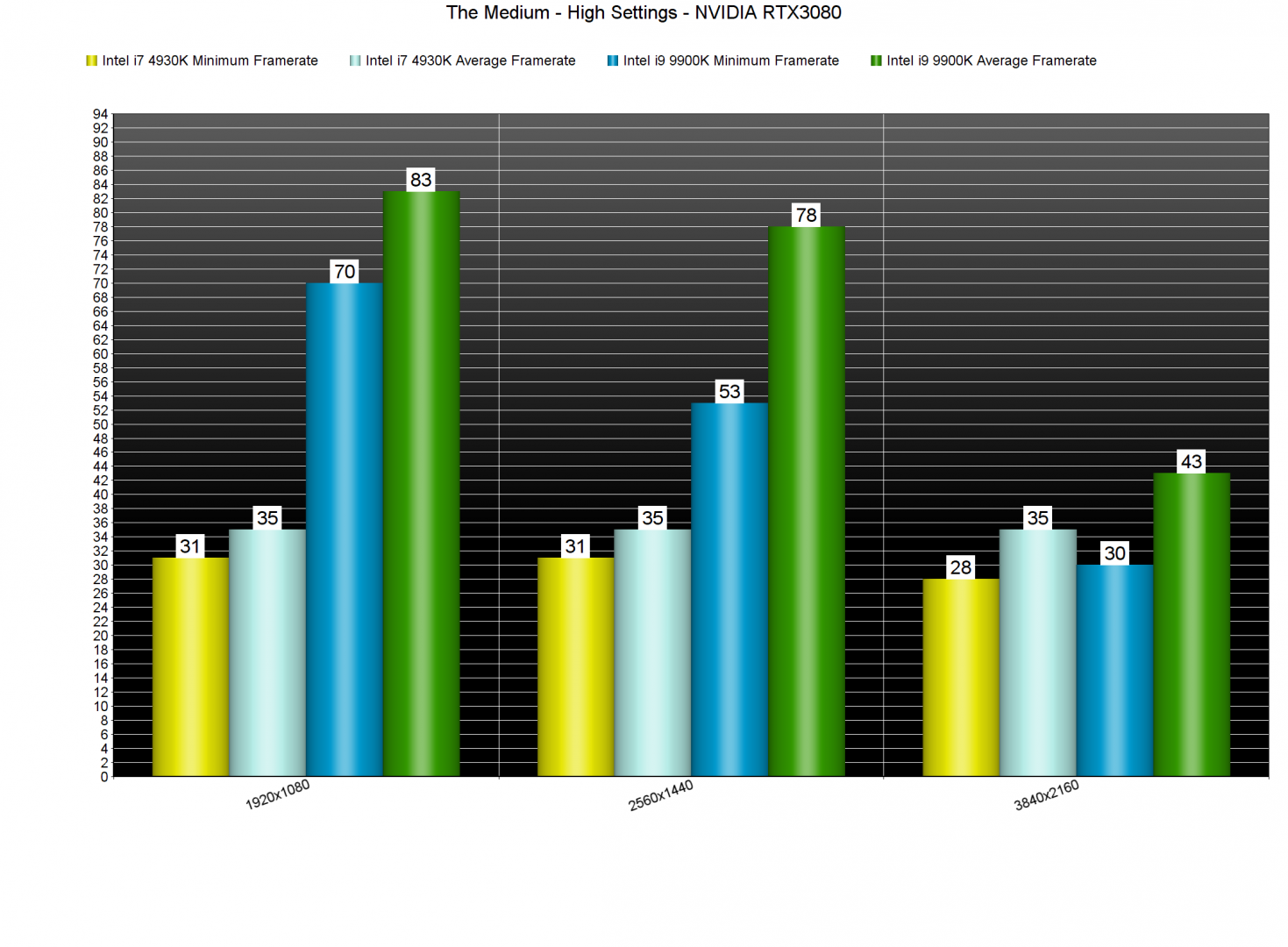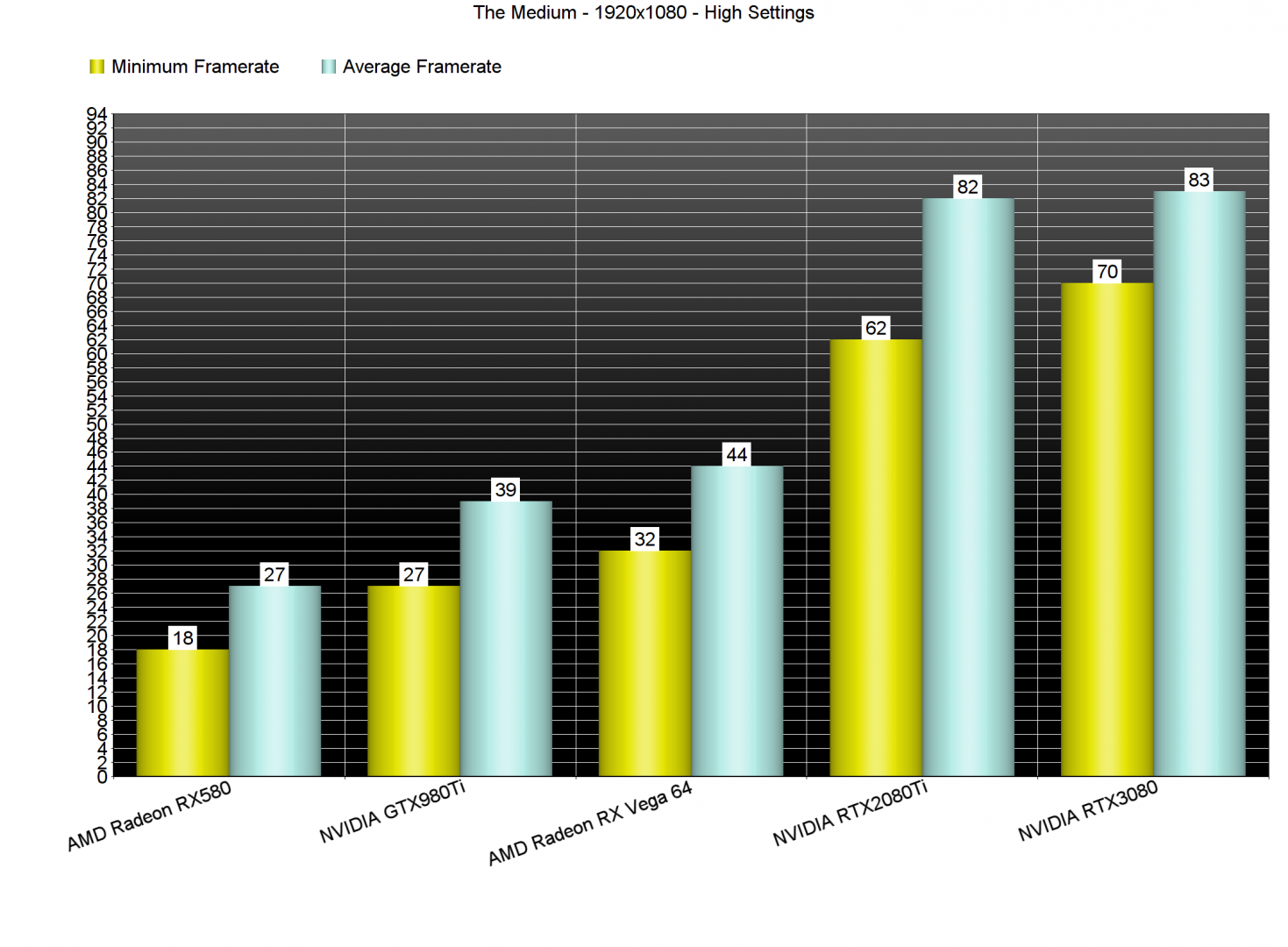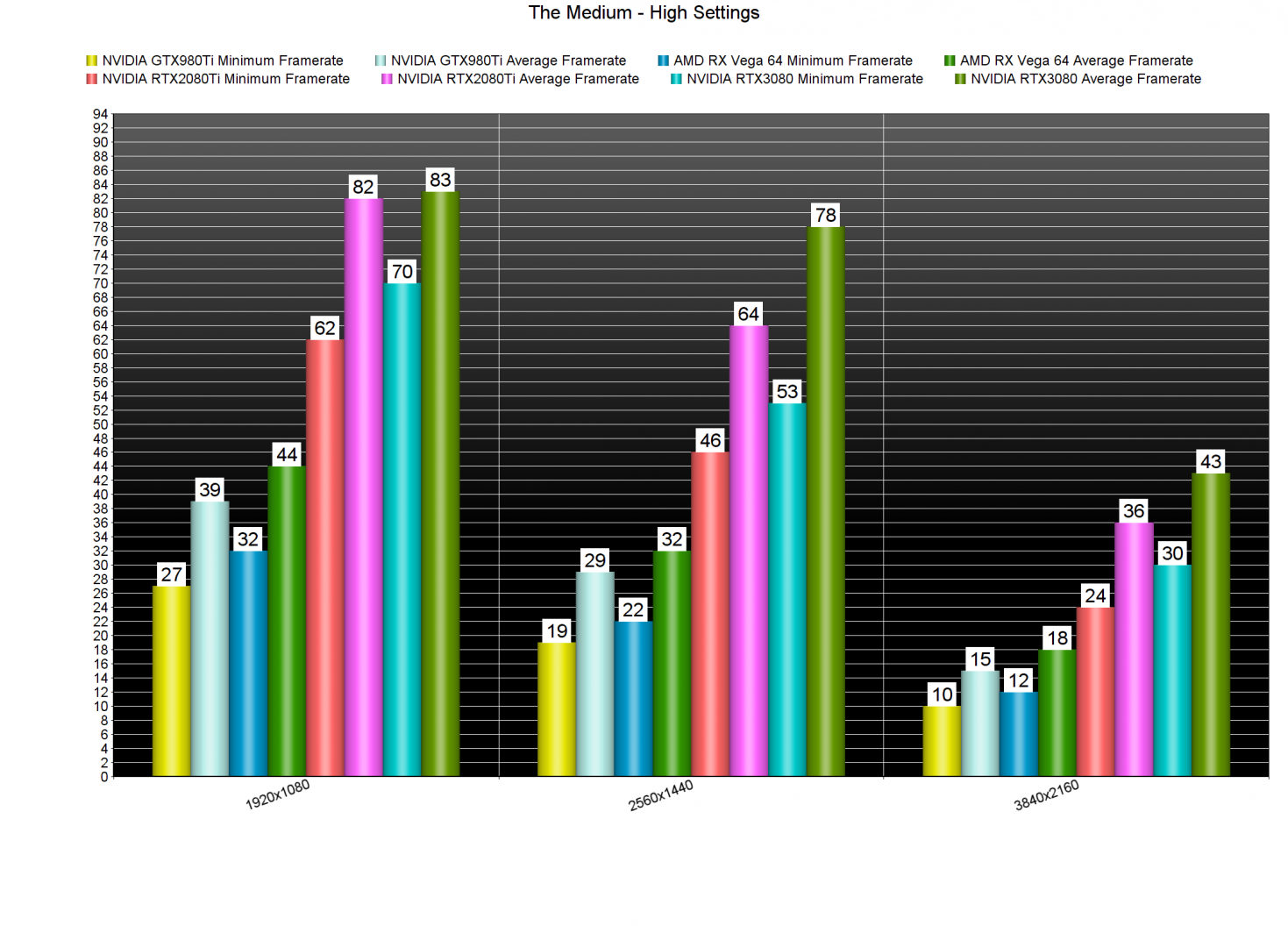The Medium came out last month and had some awful optimization issues at launch. So, after receiving its first performance patch – which resolves the GPU utilization issues we reported – we’ve decided to benchmark this game and see how it performs on the PC platform.
For this PC Performance Analysis, we used an Intel i9 9900K with 16GB of DDR4 at 3600Mhz, AMD’s Radeon RX580 and RX Vega 64, NVIDIA’s GTX980Ti, RTX 2080Ti and RTX 3080. We also used Windows 10 64-bit, the GeForce driver 461.40 and the Radeon Software Adrenalin 2020 Edition 21.2.1 drivers. Since this game is very GPU-heavy, we did not test our GTX690.
Bloober Team has implemented a respectable number of graphics settings. PC gamers can adjust the quality of Shadows, Textures, SSS, Effects, Shaders and Lens Flares. There are also settings for SSAO, SSR, Separate Translucency, LPV (which is by default Off) and Motion Blur. The game also support Ray Tracing, DLSS and FidelityFX Sharpening. We’ve already covered the game’s Ray Tracing and DLSS 2.0 features in a separate article, so be sure to also read that.
The Medium does not come with any built-in benchmark tool. As such, we’ve decided to use the following dual-reality scene for our benchmark purposes. This is a scene that stresses both the CPU and GPU, and will give you a better idea of how the game runs during its very demanding scenes. We also tested the DX11 API as it runs similar to DX12 (and does not suffer from the awful stuttering issues that plague DX12).
In order to find out how the game scales on multiple CPU threads, we simulated a dual-core, a quad-core and a hexa-core CPU. And, as we can see, the game requires at least a modern-day quad-core system.
Surprisingly enough, The Medium performed horribly on our older Intel i7 4930K. At 1080p/High settings, we were averaging between 31-35fps. In this particular game, the i9 9900K is faster by around 145% than the i7 4930K. Hell, even at 4K we were CPU-limited by the i7 4930K.
The Medium also requires really powerful graphics cards. At 1080p/High settings, the only GPUs that were able to provide a smooth 60fps experience were the RTX2080Ti and the RTX3080. The AMD Radeon RX580 could not come close to a 30fps experience, and the GTX980Ti had drops below 30fps.
At 1440p/High settings, there wasn’t any GPU that could provide a constant 60fps experience. The RTX3080 was able to push an average of 78fps, however, it could also drop to 53fps in some areas. As for 4K, the RTX2080Ti could not provide a constant 30fps experience. On the other hand, the RTX3080 was able to push a minimum of 30fps and an average of 43fps. For those wondering, the RTX3080 is 20% faster than the RTX2080Ti in this game.
Graphics-wise, The Medium looks great but it definitely does not justify these huge GPU requirements. The main characters are nowhere close to what other triple-A studios, like Quantic Dream Ubisoft or DICE have achieved. Animations are also a bit stiff, and the facial animations are a bit “amateur-ish”. Thankfully, the game’s environments look great. As with all previous games from Bloober, The Medium uses Unreal Engine. Again, though, its graphics do not justify these underwhelming performance figures.
All in all, The Medium still suffers from optimization issues. Thankfully, Bloober has resolved the game’s awkward GPU utilization issues. However, it has not been able to further optimize it. NVIDIA RTX owners will be able to enable DLSS in order to improve overall performance. Sadly, though, those with AMD GPUs or older CPUs will encounter performance issues, even at low resolutions.

John is the founder and Editor in Chief at DSOGaming. He is a PC gaming fan and highly supports the modding and indie communities. Before creating DSOGaming, John worked on numerous gaming websites. While he is a die-hard PC gamer, his gaming roots can be found on consoles. John loved – and still does – the 16-bit consoles, and considers SNES to be one of the best consoles. Still, the PC platform won him over consoles. That was mainly due to 3DFX and its iconic dedicated 3D accelerator graphics card, Voodoo 2. John has also written a higher degree thesis on the “The Evolution of PC graphics cards.”
Contact: Email

